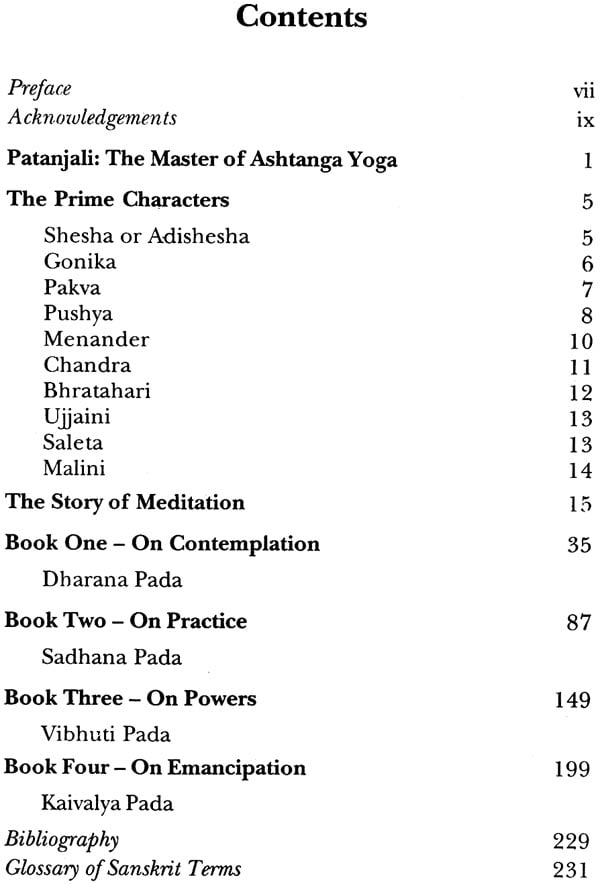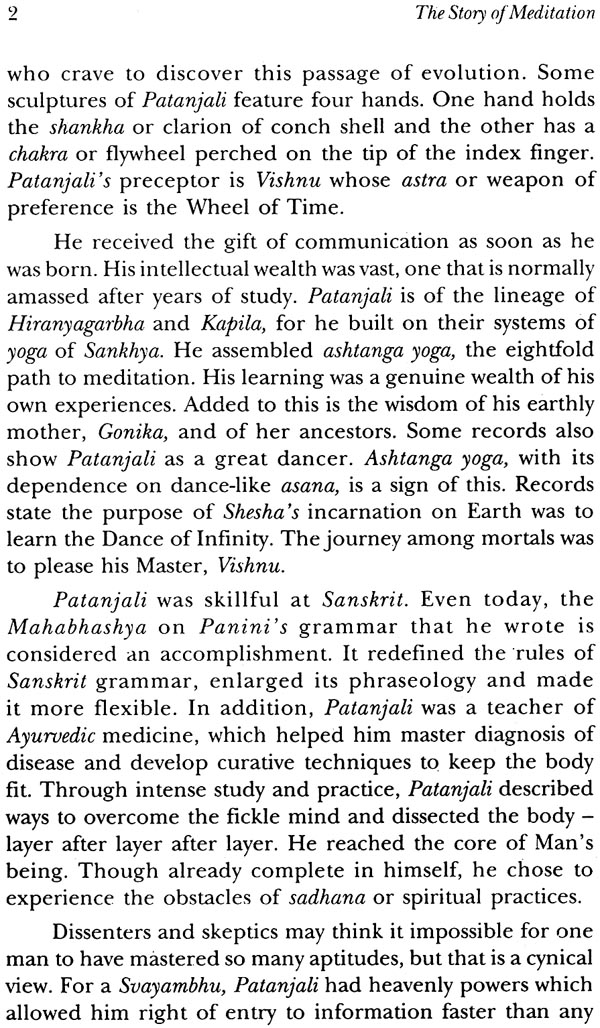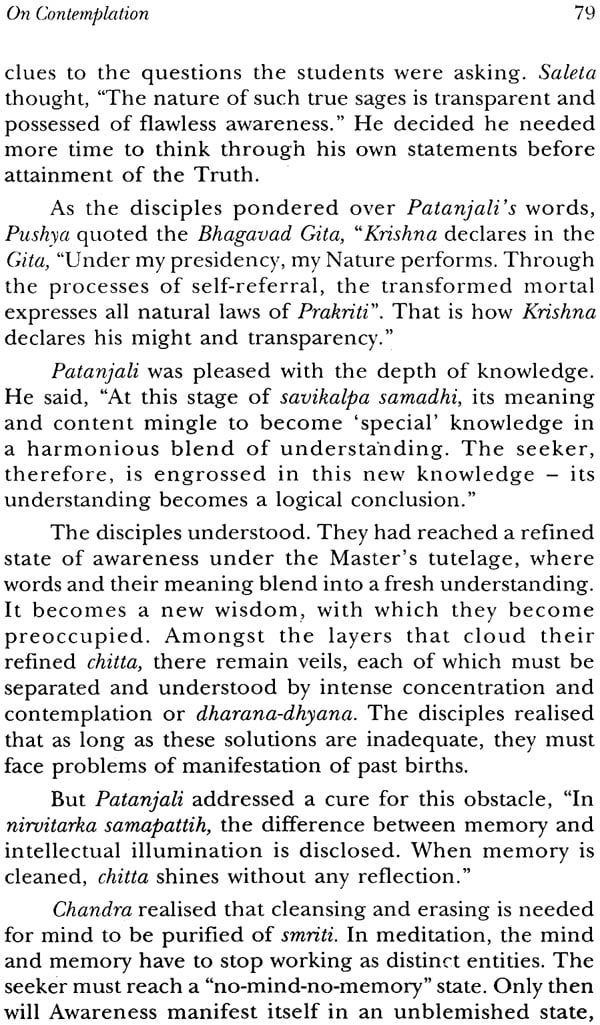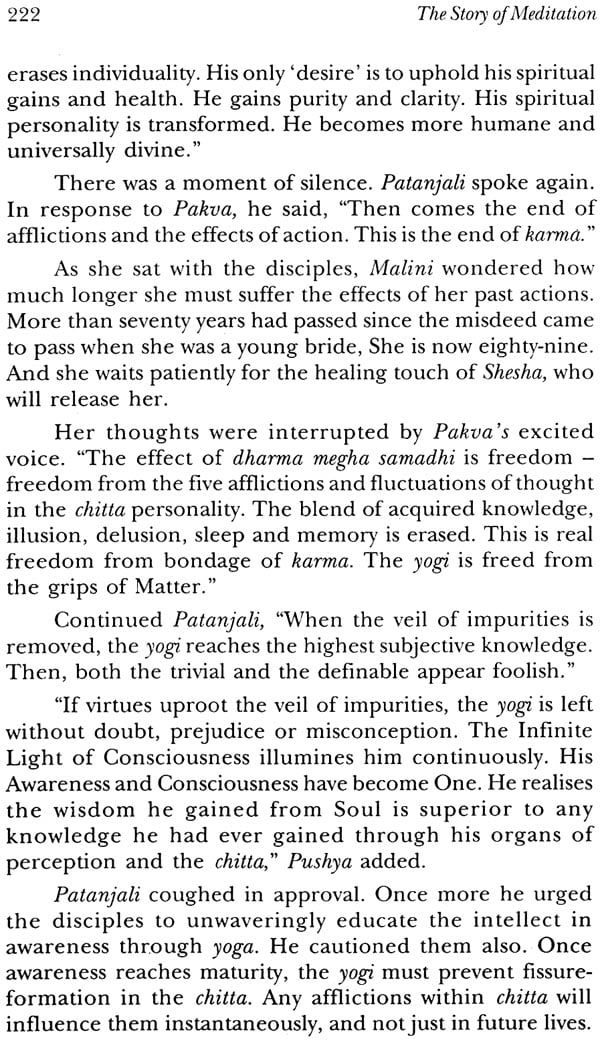
The Story of Meditation
Book Specification
| Item Code: | NAT146 |
| Author: | Sneh (Ahuja) Chakraburtty |
| Publisher: | New Age Books |
| Language: | ENGLISH |
| Edition: | 2009 |
| ISBN: | 9788178223216 |
| Pages: | 244 |
| Cover: | PAPERBACK |
| Other Details | 8.50 X 5.50 inch |
| Weight | 360 gm |
Book Description
Patanjali’s Ashtanga Yoga is no mean assignment to identify with! It took the author over twenty years to unbolt (she hopes) what the sutras were trying to converse with her. In this book she gives personalities inherent in each of the seven chakras in the spinal cord. She weaves a story around individuals at different levels of human evolution while on a spiritual journey.
The book is a masterpiece. Dr. Chakraburtty has worked with her spiritual teacher, Swami Chinmayananda for over 25 years. The Story of meditation is both her personal experience of spiritual development and an in-depth text of Eastern philosophy, specifically.
Sneh (Ahuja) Chakraburtty was born in Punjab, educated in Zanzibar and in Ireland. She grew up with a deep interest in spirituality. She was taught the Vedanta by Swami Chinmayananda himself for over twenty years. Thirty three years later, she continues to make medicine and philosophy a symbiotic relationship.
The Story of Meditation is based on the writings and research of Sage Patanjali in his Yoga Sutras. Written more than two thousand years ago, the sources of the 196 sentences that make up the Yoga Sutras are believed to be the Mahabharata, and the Bhagavad-Gita. A study of the Yoga Sutras compels a study of Vedic philosophy and a comprehensive spiritual journey into meditation. Patanjali’s seven disciples, as you will discover during the course of this book, are spiritual hopefuls who change their own particular tendencies and traits to reach the Goal in defeating the individualistic self [ego] and discovering the true Self [Soul]. A spiritual journey should enable us, the seekers, to recognise the statements and observations made in the Yoga Sutras, to experience them, and reproduce them in meditation. The most essential contribution to a successful spiritual journey is the seeker’s inherent self-discipline to fast, to study, to conceptualise.
The paths to spiritual success, of course, vary. Patanjali examined the many paths to reaching the Goal and found that some seekers are naturally inclined to search and arrive at tranquility and contentment. Some find inspiration in reflection, chanting and devotion. Some respond to.a form of integral discipline — which can vary from self-deprivation to altruistic acts of devotion. Some can achieve growth through samadhi. Though there are many paths, seekers of spirituality find success when all eight elements of ashtanga yoga cooperate.
In-built Programming Governs Us… Thousands of years ago, Indian sages outlined scientific theories about the body, the mind and the intellect. These men of learning set down the inner sciences in sacred scriptures. They deduced that these truths formed the basis of human health and spirituality, like codes form the base of any software. These ‘truths’, embedded in Vedanta, outline how every human is governed by rules called samskaras and how every human behaves only — and exactly — according to this in-built programming. So, unlessa seeker learns to decode these messages, he cannot decipher or hope to understand the larger Truth.
Many sages, including Patanjali, Shankaracharya, Vyasa and Chinmayananda, created scientific ‘programming’ designed to heighten and hasten the process of spiritual learning. By mapping the paths of inward processing, they learned how to train the inner operations of their bodies and minds. After that, they devised ways to apply these ideas to the traditional scriptures, or the old way of achieving enlightenment. The purpose was to speed up spiritual evolution, stabilize the intellect and achieve an undisturbed enduring state of spiritual awareness. The descriptions they have left behind, of their individual journeys, have survived time and age ... even rapid and consistent change.
These ideas are the steps to a spiritual life. A seeker has to understand, assimilate and practise these concepts. And, if one wants to embark on the path of spiritual awakening, one can. Throughout these pages, essential truths from Sage Patanjali’s journey have been deciphered, and the Sanskrit terms explained in a glossary at the end of the book [so the flow of reading is uninterrupted]. ‘Man’, as used in the text, refers to ‘humankind’, and to no particular sex.
**Contents and Sample Pages**












